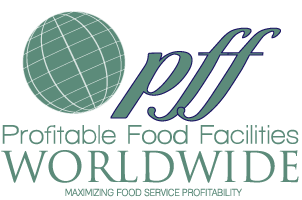As noted in the 2019 NRPA Agency Performance Review report released earlier this year, there continues to be a decline in “general fund support from local and state governments for park and recreation systems across the country and increasingly agencies are being “challenged to generate more of their operating and maintenance costs from fees and charges.” The report further states that “the need for self-generated revenues could put pressure on agencies as they continue in their mission to serve all members of their communities, including those with little means to pay for park and recreation services. Balancing financial needs with the social equity mission will be one of the most challenging issues facing park and recreation professionals in the coming year and beyond.”
It is a delicate balancing act. Generate too much income from concessions and a park may see its general funds support decline even further or see the funds it generates from concessions absorbed back into the city’s general fund. In this new normal of bike and ride sharing and mobile food delivery via services like food trucks, there seems to be any number of ways parks can provide patrons with services beyond the traditional food stand and kayak/boat rentals.
Several years ago, the City of Philadelphia Parks and Recreation, the Fairmount Park Conservancy and Philadelphia’s Commission on Parks and Recreation commissioned a study of the park department’s concession operations to develop an overarching strategy. One of the strategic outcomes of this study was the idea of locating concessions around the park’s major entry points or “gateways,” with the hope of not only reenergizing the parks and their surrounding neighborhoods, but also generating the much-needed revenue for the parks. For example, through a concession deal with a bike rentals vendor, Philadelphia Parks and Recreation netted $45,000 that it was able to reinvest in park improvements and repairs.
Food concessions is a mainstay for many parks. However, with minimum wages increasing and the cost of goods on the rise, how do park districts manage the cost of concessions operations without sacrificing the quality of their service and food, or raising prices sky high? How can they run a recession-proof operation that will generate revenue for many years to come? Parks & Recreation magazine reached out to Michael Holtzman, president and CEO of Profitable Food Facilities, who will be presenting at the 2019 NRPA Annual Conference on “The 10 Secrets of Concessions to Increase Cost Recovery” for some insight on what he will share in this session.
Parks & Recreation: What are some of the major challenges facing park concessions and why?
Michael Holtzman: Parks and recreation has built and operated ice rinks, sports fields, aquatic facilities, golf courses and recreation centers. The challenge is that all these facilities have a food component. Parks and recreation creates programs for communities, so operating food and beverage is not a normal part of its programming. Subbing out to a third party can give too much money to the third-party operator, leaving no money for the park district. Self-operating is difficult, as there is very little knowledge in the park and recreation industry about food and beverage. So, what do you do? This is what we will be discussing, all the options, in the presentation.
P&R: Do you have an example of a park district that was able to turn around its concessions?
Holtzman: The city of Grapevine, Texas, is operating a concession at a ballpark. Working with us over the course of three days, the city was able to increase concession sales from $300,000 to $500,000 in just one season. By offering different products, different cooking methods and a whole new approach, sales increased 60 percent and profits increased by 150 percent. Knowing which products, recipes and methods for production work, and work well, makes all the difference.
P&R: Of the challenges you mention, could you give some details about how to manage one or two of them? For example, what’s one way of managing inventory/saving money on product orders?
Holtzman: Take the time to cost out every single menu item to make sure everything is [less than] 33 percent of cost of goods. So, if a candy bar costs you 67 cents, you need to charge $2.00.
P&R: What’s one solution for effective staffing?
Holtzman: Posting ads that entice people to click on them. You have to stand out from the other job postings and highlight the “perks” of the job. Posting another ad with a tagline of “Now Hiring Cook” and/or “Double Shifts Required” is a turn off for potential candidates.
P&R: How do you run an efficient, expedited line speed?
Holtzman: Having the proper POS system that can ring up food efficiently like a restaurant. Out-dated systems will increase time spent with the customer and slow down your line speed. The least number of keystrokes to ring in an item the better.
P&R: Where do you see park district health-forward food trends going in the next five to 10 years?
Holtzman: With community health in mind, park districts are utilizing more fresh ingredients with local sourcing in mind. These food trends aren’t happening just in park districts — they are food industrywide!
P&R: What are some of the other solutions and methods attendees would learn about from this presentation?
Holtzman: The biggest item is to offer some direction on what to do. Knowing how to manage the cost of labor and goods, maintain quality and drive revenue is key for park districts. One example of a new direction is that several park districts are even getting food trucks so they can take them to different venues across the city!
Sonia Myrick is the Executive Editor for Parks & Recreation magazine.


